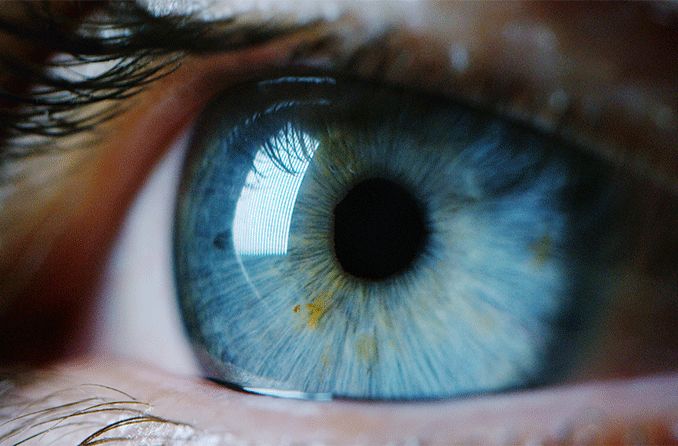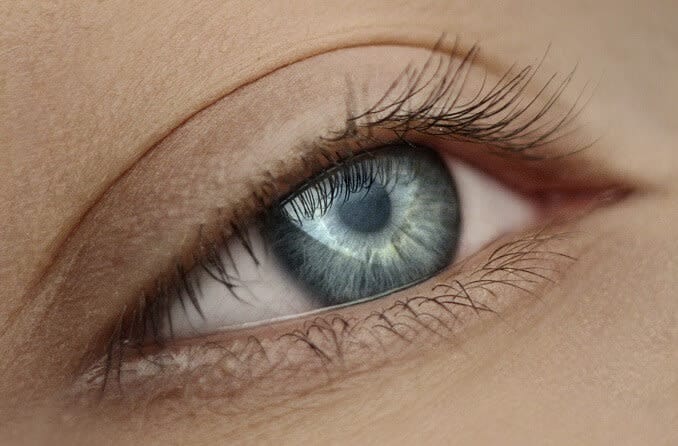Vision is the ability to use your eyes to see and interpret the world around you.
Vision is a two-part process. The eyes focus on and capture an image, but the image needs to be interpreted by the brain before you can make sense of what you’re seeing.
Our sense of sight is responsible for most of the information we absorb from our five combined senses. Many of the movements we perform, tasks we complete and personal interactions we make rely on vision in some way.
Even our sleep schedules are affected by the light we see during the day.
Humans in most modern cultures hold their eyesight above all other senses. In one study, 88% of participants ranked vision as their most valued sense. Even then, it's easy to take our vision for granted. The average person develops their eyesight as a newborn and uses it throughout their life, rarely giving it much thought.
But dive into the inner workings of vision, and you’ll find that eyesight — even with its limitations — is an amazing thing.
SEE RELATED: Does Losing Your Vision Make Your Other Senses Stronger?
How vision works
The human brain is responsible for every thought we have and sense we perceive — including vision. But without the eyes, the brain would have nothing to interpret.
Eyesight starts when light meets the eyes. After that, all kinds of things are set into motion.
Vision can be best simplified into the following steps:
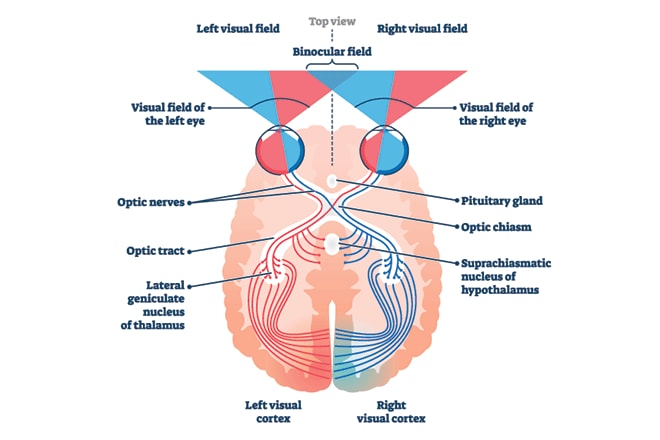
Nerve signals from your eyes travel along the optic nerve toward the visual cortex in your brain.
Light from an outside source, such as the sun or an artificial light, either travels directly toward you or bounces off another object, and then travels toward you.
The light traveling toward your eye passes through the cornea (the clear, outer layer in the front of the eye) and enters through the pupil (the small, black opening in the middle of each eye).
Light then passes through the eye’s natural lens, a clear, disk-shaped structure behind the pupil. Tiny muscles work together to focus light by automatically adjusting the lens. The curved lens “flips” the light upside down.
The light passes through the eye’s vitreous fluid and lands on the retina, a thin layer of tissue in the back of the eye.
Along the retina, millions of light-sensitive cells called rods and cones react to the light. The rod cells activate mostly to low light and light in your peripheral (side) vision, while cones activate to color, bright light and small details.
Nerve impulses from the rods and cones “exit” each eye through the optic nerve, and some signals cross paths at the optic chiasm. Impulses relay through a gateway called the lateral geniculate nucleus and travel toward the back of the brain.
The impulses arrive at the visual cortex, where they’re registered right side up. The brain sends this raw information to other parts of the brain, allowing you to interpret the batch of light as a meaningful image.
This process seems complicated, but the eyes and brain make it look easy — and incredibly fast.
Researchers at MIT recently discovered that the brain may be able to fully process images in as little as 13 milliseconds (about one-eightieth of a second). That’s about 10 times faster than the amount of time it takes to blink.
SEE RELATED: How far can the human eye see?
The colors of eyesight
Think of “light,” and your mind probably jumps to the glow of a lamp or glare of the midday sun.
When this light strikes an object, part of it is absorbed and part of it is reflected. When the reflected light reaches our eyes, cone cells on the retina are activated.
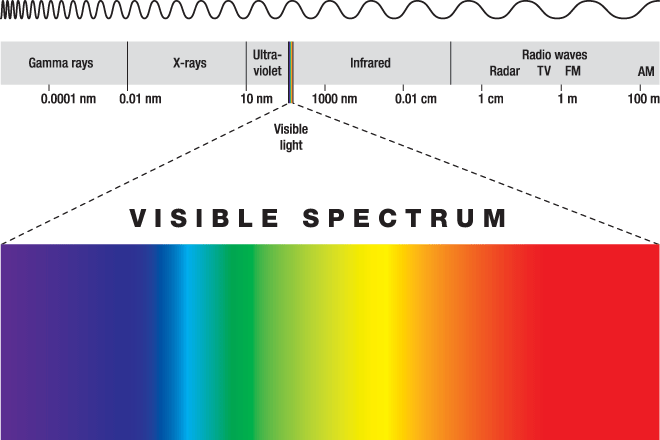
Humans can see up to 10 million colors, but those make up a very small slice of the electromagnetic spectrum.
Cones react to light in the form of red, green and blue signals. The brain combines these signals into the colorful image you see in front of you.
All the light you’ve ever seen is known as visible light, the portion of the electromagnetic radiation spectrum human eyes can perceive.
A dense rainbow may look vibrant to our eyes, but its colors only represent a tiny fraction of the radiation soaring around us at all times.
This is why you can see the visible light coming from the sun, but not the ultraviolet radiation that can hurt your eyes and skin. You can use an X-ray machine without seeing X-ray radiation beaming out of it. You use a cell phone without seeing the flow of radio waves going in and out.
These are all types of “invisible light.”

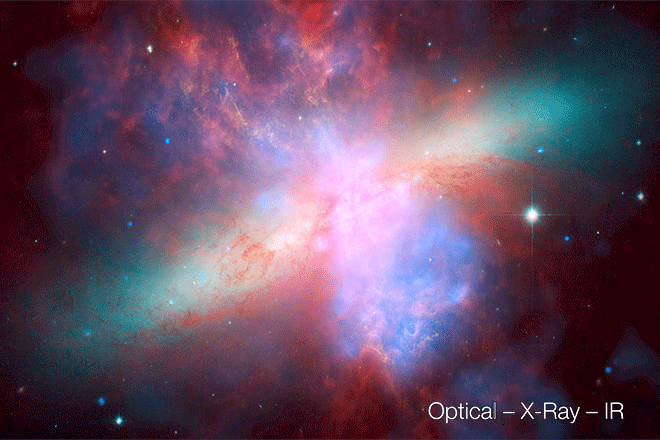
(Image credit: NASA)
This phenomenon is on display in many of the photos we see of distant objects in outer space. Space agencies like NASA often combine visual light with invisible radiation to develop the striking photos we’re used to.
These NASA images of the Cigar Galaxy show the difference between the light we can and cannot see.
The top image only shows the light that would be visible to our eyes. It was taken from the Hubble Space Telescope over a long period of time and slightly colorized to imitate what the galaxy would look like in real life.
It’s a stunning image by itself, but one that seems dull when compared to the one below: Visible light blended together with colorized X-rays and infrared rays.
X-ray and infrared “light” would normally be invisible to our eyes. But when it’s captured and processed, it gives us an idea of how much lies beyond our greatly limited field of vision.
SEE RELATED : Space changes your eyes in some pretty unnatural ways
Low-light vision
Humans cannot see in total darkness, but they do have night vision.
The rod cells along the retina specialize in low-light settings. They’re responsible for most of what you see when you walk around a dimly lit room or stroll outdoors after dusk. But since they don’t respond to color, night vision is mostly colorless.
Night vision isn’t a fast process in humans. After the pupils open wider to allow more light inside, it takes rod cells between five and 10 minutes to kick in. It takes them almost half an hour to completely adjust to the dark.
A lot of animals don’t have this problem.
There’s a good chance you’ve seen a bright reflection in an animal’s eyes at night or in photos. You can see it in dogs, cats and horses, in addition to wild animals like deer and raccoons.
That colorful glare is their tapetum lucidum, an iridescent layer in the backs of their eyes. It’s a handy evolutionary feature that helps them see in the dark by reflecting more light onto the retina.
But nature has its trade-offs, and daytime vision in humans tends to be sharper and more colorful than that of our four-legged friends.
Common eyesight problems
The perfect human eye focuses light neatly onto the retina in the back of the eye. But humans aren’t perfect, and minor vision problems happen all the time.
Refractive errors are very common conditions that change the way light strikes the retina. They include:
Nearsightedness : Light focuses too far in front of the retina and causes distant objects to look blurry. This usually happens because the eyeball’s shape is too long.
Farsightedness : Light focuses too far past the retina and causes near objects to look blurry. This usually happens because the eyeball’s shape is too short.
Astigmatism : Light doesn’t focus on the retina correctly because the cornea or lens is misshapen. This can cause both near and far objects to look blurry.
Presbyopia : Less flexible lenses and weaker muscles around them cause farsightedness. This happens to everyone as they get older.
Glasses and contact lenses work by changing the way light enters the eye and making it focus properly on the retina. They’re usually an easy solution for most cases of refractive error.
The absence of vision
Partial or complete blindness can occur when something interrupts a step in the vision process. Eye-related problems cause most cases of vision loss, but brain conditions and injuries can lead to blindness too.
Vision loss that starts in or around the eyes is usually the result of a problem in one of these areas:
Lens
Retina
Optic nerve
Macula (the center of the retina)
Cornea
Eyeball shape
When someone experiences blindness, their brain starts to form new connections to strengthen other senses. Over time, they learn to rely on these senses to compensate for their loss of vision.
The World Health Organization states that more than half the cases of blindness worldwide are caused by cataracts, a slow clouding of the eye’s clear lens. Without surgery to replace the cloudy lens, partial vision loss can eventually lead to blindness.
Caring for our vision
The Greek philosopher Aristotle once wrote that “we prefer seeing to everything else.” Taste, smell, hearing and touch are all important parts of human perception. But more than 2,000 years later, most of us would agree with Aristotle.
To keep our vision in the best condition, we need to take care of it.
That can mean reducing eye strain with fewer digital screens and more natural sunlight. Other times, it means taking an hour out of our day for a routine check-up with an eye doctor.
By staying on top of eye health, you’re giving your retinas, lenses, rods and cones the best shot at humming along for years to come.
READ NEXT: Cat Vision and Dog Vision (or read all about animal vision here)
